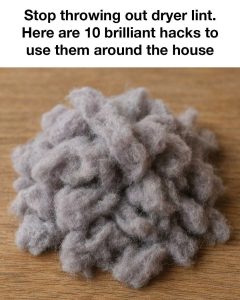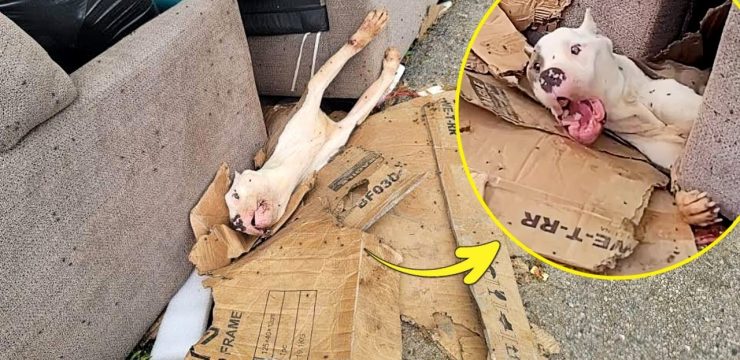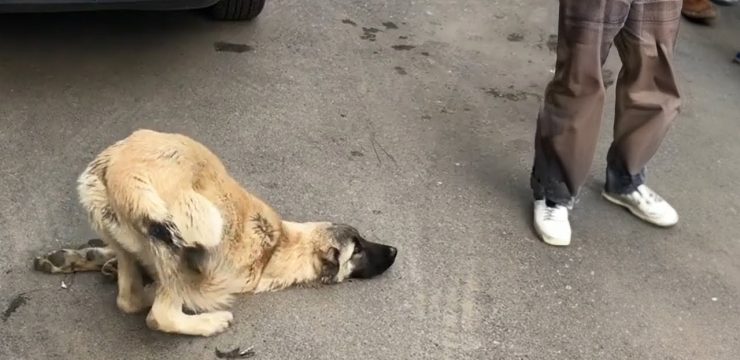Dryer lint is usually seen as an annoying leftover from doing laundry—a fluffy mess most people toss in the trash without a second thought. But what many don’t realize is that this seemingly useless material is surprisingly versatile and can be repurposed in creative and practical ways around the home. By finding smart uses for dryer lint, you’re not only reducing household waste, but also tapping into a free and plentiful resource that can help with everything from crafts to gardening. In fact, this soft, lightweight byproduct can serve as a helpful tool in many areas of daily life.

To understand how to best use dryer lint, it helps to know what it’s made of. Dryer lint forms as tiny fibers come off clothing during the drying cycle. Depending on what you wash, the lint will contain a mix of cotton, wool, and synthetic fibers. Because of this blend, it’s soft, fluffy, and durable—ideal for a variety of uses. Knowing its composition is also key when deciding how and where to repurpose it safely.
That said, it’s important to note that dryer lint is highly flammable. Always store it in a cool, dry place far from heat or open flames. Be cautious when using it in projects involving fire or heat. Also, be mindful of any chemical residue that may be on the lint from detergents or fabric softeners. These chemicals could impact how safe or effective the lint is in certain applications.
One of the most popular and practical uses for dryer lint is making fire starters. Because lint catches fire easily, it’s perfect for starting campfires or grills. Just stuff dryer lint into the compartments of a cardboard egg carton and pour melted wax over each section. Once the wax hardens, cut out each cup and you’ve got compact, portable fire starters ready for your next camping trip or backyard barbecue. They’re lightweight, easy to carry, and ignite quickly.
If you’re into crafting, dryer lint can also be turned into homemade paper. Blend the lint with water to form a thick pulp, then spread it out evenly on a screen to dry. The result is a textured, handmade paper that’s perfect for DIY greeting cards or artistic projects. This is a fun and eco-friendly way to recycle lint while getting creative.
In the garden, dryer lint can double as mulch. When spread around the base of plants, it helps retain moisture and suppress weeds. Just be cautious about using lint from synthetic materials, as those don’t break down as easily as natural fibers. For best results, stick to non-edible plants to avoid any possible chemical transfer from detergent residues.
Pet owners can also benefit from dryer lint. If you have small pets like hamsters or gerbils, lint can be used as bedding material. Its soft texture makes it perfect for creating a cozy nest. However, always make sure the lint is free from any toxic substances. Regularly replace the bedding to maintain cleanliness and ensure your pet’s health.
Gardeners can also use dryer lint to create eco-friendly seed starters. Simply fill toilet paper rolls or eggshells with dryer lint and add seeds. The lint holds moisture well and encourages germination. When your seedlings are ready to move to the garden, you can plant the whole thing—container and all—since it will naturally break down in the soil.
For the crafty crowd, dryer lint is a useful filler for homemade pillows or soft toys. If you’re into sewing or DIY home decor, consider collecting lint as a stuffing alternative. Just make sure it’s clean and free of debris. It’s a great way to reuse what would otherwise be trash while adding a personalized touch to your handmade creations.
Dryer lint also plays a surprising role in composting. As a carbon-rich material, it helps balance the nitrogen-heavy content like food scraps in your compost bin. That said, only use lint composed mostly of natural fibers, as synthetic ones won’t decompose properly. This helps reduce waste and supports a more sustainable gardening cycle.
For artists, dryer lint can be an unexpected but valuable medium. Its texture makes it fun to mold and shape for sculpture or mixed media projects. It can be dyed with fabric-safe colors to create vibrant art pieces. Whether you’re an experienced artist or just experimenting, lint offers a unique, low-cost way to express your creativity.
Another practical use for dryer lint is insulating plant pots during winter. Wrap lint around the outside of outdoor pots to help insulate the roots from frost. This can be especially helpful for potted plants left on porches or in unheated spaces. Make sure to secure the lint so it doesn’t blow away in the wind.
For DIY home improvement lovers, lint can even be added to paint to create textured finishes. Mix a small amount into your paint to give surfaces a tactile, unique appearance. It works well on accent walls or decorative crafts, allowing for custom texture and a bit of visual flair.
Ultimately, dryer lint doesn’t have to be a waste product. With a little creativity and a focus on sustainability, you can turn this laundry leftover into something genuinely useful. From gardening hacks to artistic projects, the possibilities are broader than most people expect. So next time you clean out your dryer, think twice before tossing that lint. You just might find a new way to make it work for you—and help the planet while you’re at it.





